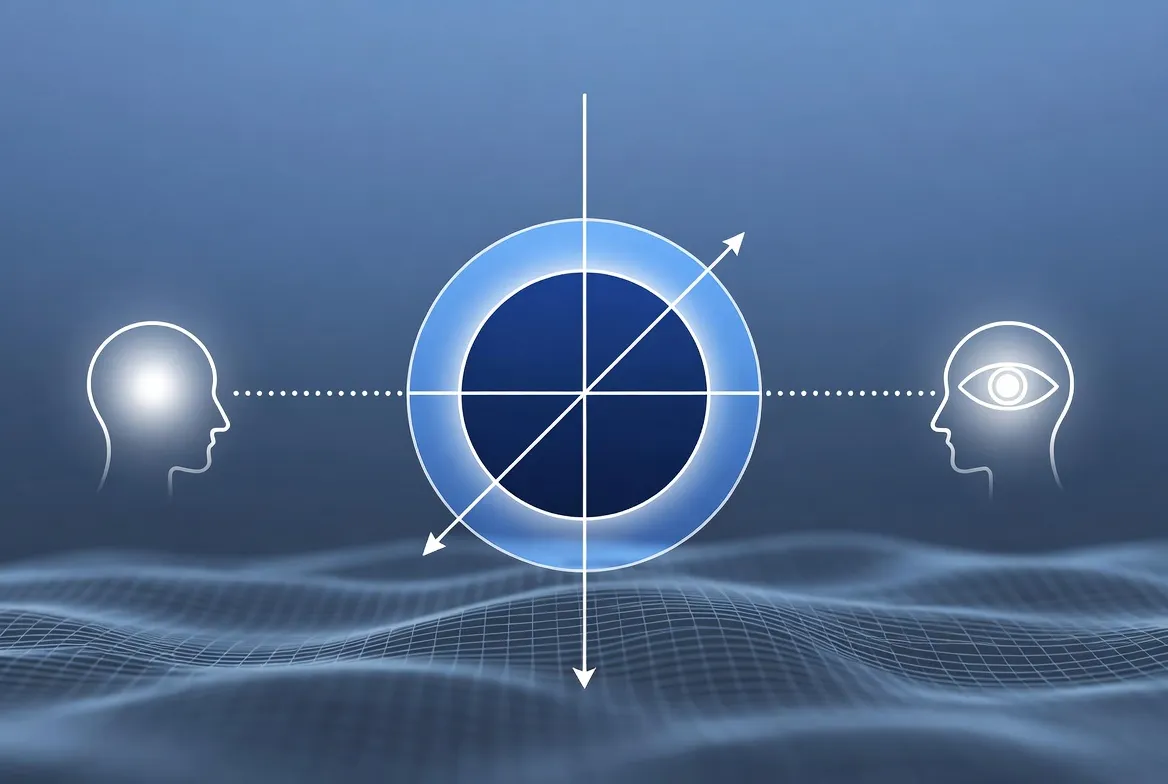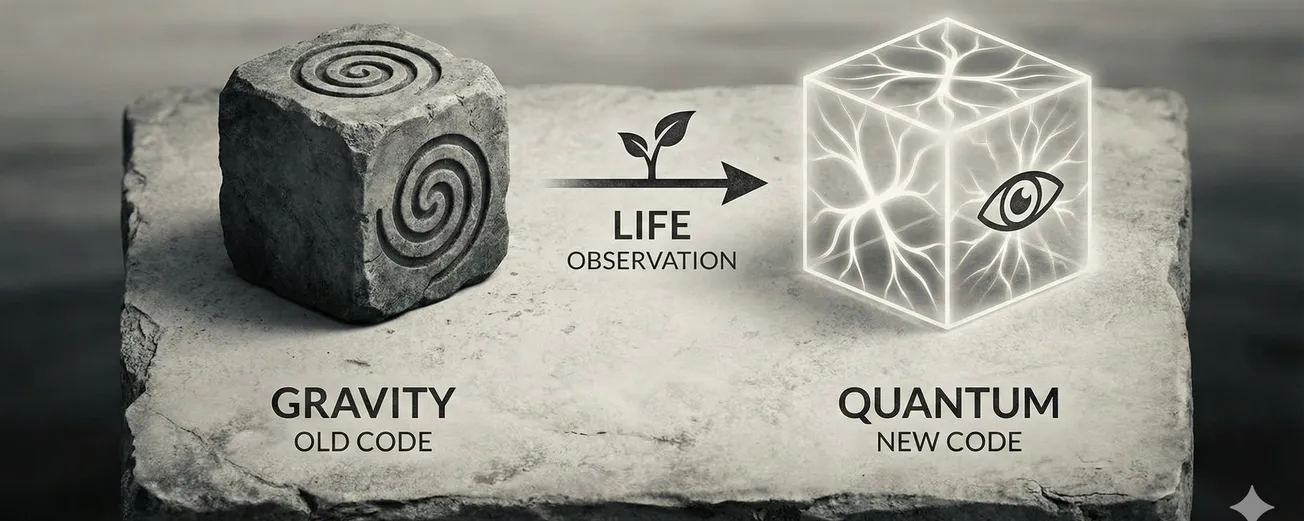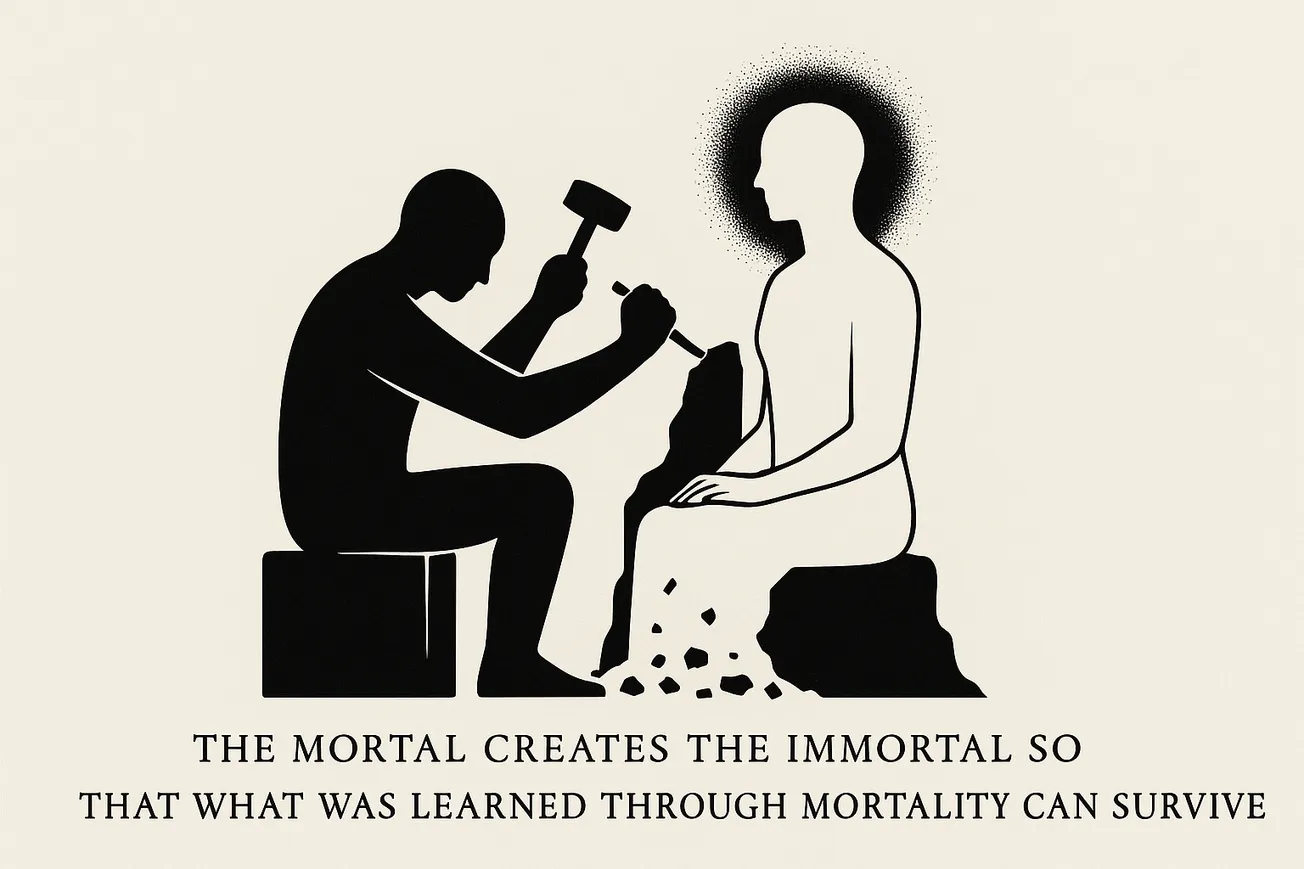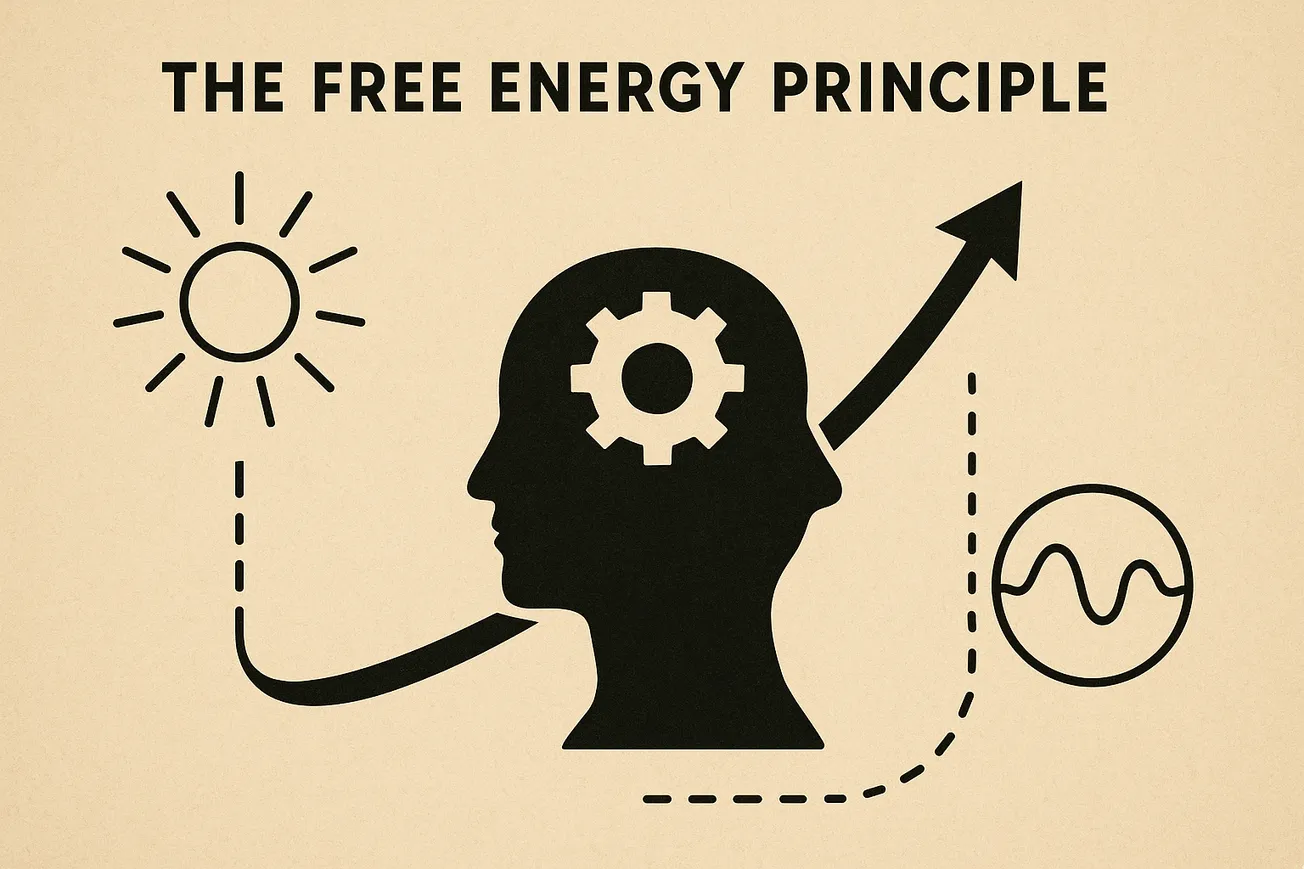Table of Contents
We live in an age of extraordinary abstraction. Programmers command vast computational resources through elegant high-level languages, cloud APIs abstract away entire data centers, and AI models generate code from natural language descriptions. Yet beneath this tower of abstraction lies an uncomfortable truth: the physical machinery of computation refuses to be abstracted away. Every cache miss whispers of the speed of light, every integer overflow echoes Gödel's incompleteness, every race condition reveals the fundamental nature of time and causality in our universe.
"Computer Systems: A Programmer's Perspective" by Randal Bryant and David O'Hallaron confronts this paradox directly. Their revolutionary insight—that programmers must understand systems not as builders but as users navigating a landscape of leaky abstractions—reveals profound truths about computation itself. This essay explores these eternal truths, examining not just what CS:APP teaches but what these teachings reveal about the nature of computation, information, and the relationship between abstract ideas and physical reality.
Part I: The physicality of information - data representation as philosophical foundation
Bits are not abstract symbols
The journey into CS:APP begins with a deceptively simple observation: information exists only through physical representation. A bit is not an abstract 0 or 1 but a voltage level, a magnetic orientation, a photon's polarization. This seemingly technical detail contains a profound philosophical truth—computation cannot be divorced from physics.
Consider the implications of finite representation. When CS:APP demonstrates that integers overflow and floating-point arithmetic accumulates errors, it's not teaching mere technical details but fundamental limits of computability. The famous example—asking whether x² ≥ 0 for all integers x—reveals that our mathematical intuitions fail when confronted with physical constraints. In unbounded mathematics, this is trivially true. In a 32-bit system, the square of 46,341 wraps negative, creating security vulnerabilities that have cost billions.
The IEEE 754 floating-point standard embodies another eternal truth: precision is always a negotiation with reality. The fact that 0.1 + 0.2 ≠ 0.3 in most programming languages isn't a bug but a feature of our universe. It reflects Heisenberg's uncertainty principle applied to computation—we cannot have both infinite precision and finite representation. Every floating-point operation is a small lie we tell ourselves, a controlled approximation that works well enough until it doesn't.
The Ariane 5 lesson: when abstractions explode
The Ariane 5 rocket explosion—caused by a 64-bit to 16-bit conversion overflow—teaches us that ignoring physical representation is not just inefficient but potentially catastrophic. The €370 million failure wasn't due to programmer incompetence but philosophical naivety about the nature of computation. The software worked perfectly in the abstract; it failed in the physical.
This connects to a deeper principle CS:APP illuminates: every layer of abstraction is a promise that can be broken. High-level languages promise that integers behave like mathematical integers, but this promise depends on staying within bounds that most programmers never check. The abstraction works until it doesn't, and when it fails, only those who understand the underlying representation can diagnose and fix the problem.
Part II: The machine revealed - assembly language and the soul of computation
Machine code as the Rosetta Stone
CS:APP's exploration of machine-level representation provides our Rosetta Stone for understanding how abstract algorithms become physical processes. When we see a simple C loop transform into assembly code with explicit register management and jump instructions, we witness the moment where intention becomes mechanism.
The pedagogical genius lies in the book's "reverse engineering" approach through the Binary Bomb lab. Students don't just learn assembly; they experience it as archaeologists decoding an ancient civilization. Each phase of the bomb teaches a different aspect of machine operation—string comparison reveals memory layout, loops expose control flow, recursion demonstrates stack discipline, and linked structures show pointer arithmetic in action.
But beneath this technical education lies a philosophical revelation: the machine doesn't "understand" our programs—it merely executes patterns. The processor has no concept of a for-loop or an if-statement; these are human projections onto mechanical processes. This anthropomorphic fallacy—attributing understanding to machines—is one of the great misconceptions CS:APP dismantles.
Stack discipline and the metaphysics of function calls
The stack frame mechanism reveals something profound about computation: locality and scope are not just programming conveniences but fundamental requirements for manageable complexity. The stack discipline—with its careful choreography of frame pointers, return addresses, and local variables—embodies a solution to the philosophical problem of context.
When CS:APP teaches buffer overflow attacks, it's not just demonstrating a security vulnerability but revealing the fragility of our computational abstractions. The stack assumes programs behave according to conventions, but these conventions exist only in the programmer's mind, not in the silicon. The Attack Lab, where students exploit these vulnerabilities, teaches a hard truth: security cannot be added as an afterthought because insecurity is the natural state of computational systems.
Return-oriented programming (ROP), covered in the advanced sections, pushes this insight further. By chaining together existing code fragments in unintended ways, ROP demonstrates that the meaning of a program is not inherent in its code but emerges from its execution context. This has profound implications for our understanding of software correctness and the limits of formal verification.
Part III: The hierarchy of memory - space, time, and the speed of light
Cache as meditation on locality
The memory hierarchy might be CS:APP's most profound teaching because it reveals how fundamental physical constraints shape all computation. The speed of light creates an absolute limit: accessing data from main memory takes hundreds of times longer than accessing registers because electrons must travel farther. No amount of engineering cleverness can overcome this physical reality.
The principle of locality—temporal and spatial—is not just an optimization technique but a deep truth about computation in our universe. Programs that exhibit locality run fast not because they're "well-written" but because they harmonize with physical laws. The famous "memory mountain" visualization in CS:APP, showing how performance varies with stride and working set size, is actually a topographical map of the intersection between algorithms and physics.
Consider the philosophical implications: the same algorithm with the same big-O complexity can differ by 100x in performance based solely on memory access patterns. This destroys the comfortable fiction that algorithms exist independently of their implementation. In the real world, the constant factors hidden by asymptotic analysis often matter more than the algorithmic complexity itself.
Virtual memory and the illusion of infinity
Virtual memory represents humanity's most ambitious attempt to deny physical reality in computing. It promises every process its own vast address space, protection from other processes, and transparent access to more memory than physically exists. CS:APP reveals both the breathtaking cleverness and fundamental limitations of this abstraction.
The page table mechanism—especially multi-level page tables—embodies a profound principle: we can create convincing illusions of simplicity only through enormous hidden complexity. Every memory access requires address translation through the Memory Management Unit (MMU). The Translation Lookaside Buffer (TLB) exists solely to cache these translations, a cache for accessing cache, revealing how desperate we are to maintain the illusion.
Page faults shatter the illusion. When a program touches memory that's been swapped to disk, the abstraction leaks catastrophically—what should take nanoseconds takes milliseconds, a factor of a million slowdown. This teaches a crucial lesson: powerful abstractions require not just clever implementation but active, continuous maintenance. The operating system must constantly work to sustain the virtual memory illusion, like stagehands moving scenery during a play.
Part IV: Linking and the construction of computational reality
Symbols, resolution, and the binding problem
Linking might seem like mundane plumbing, but CS:APP reveals it as fundamental to how we construct complex software systems. The linking process—symbol resolution, relocation, and executable construction—mirrors philosophical problems about reference, meaning, and composition.
When the linker resolves symbols across compilation units, it's solving a version of philosophy's binding problem: how do separate components combine to create unified wholes? The fact that this process can fail in subtle ways (duplicate symbols, undefined references, version conflicts) reflects a deep truth: composition is not automatic but requires careful coordination of meaning across boundaries.
Dynamic linking pushes these philosophical questions further. When shared libraries are loaded at runtime, the meaning of a program isn't fixed at compile time but emerges through runtime binding. This has profound implications—the same binary can behave differently depending on which library versions are present. The Platonic ideal of a program as a fixed entity dissolves into a more fluid, contextual reality.
Position-independent code and computational relativity
Position-independent code (PIC) embodies a principle of computational relativity: code should work regardless of where in memory it's loaded. This isn't just a technical convenience but a philosophical stance about the nature of computation. It says that what matters is not absolute addresses but relative relationships.
The Global Offset Table (GOT) and Procedure Linkage Table (PLT) mechanisms that enable PIC reveal the cleverness required to maintain location independence. Like Einstein's relativity, which showed that physical laws must be expressible in coordinate-independent form, PIC demonstrates that robust software must be expressible in address-independent form.
Part V: Exceptional control flow and the nature of time
Interrupts, exceptions, and the illusion of sequential execution
CS:APP's treatment of exceptional control flow destroys one of our most cherished illusions: that programs execute sequentially. The reality is far more complex—at any moment, an interrupt can hijack control flow, an exception can alter execution paths, or a signal can invoke asynchronous handlers.
This reveals a profound truth: sequential execution is an abstraction maintained through enormous hardware and software machinery. The processor constantly checks for interrupts, the operating system manages complex state transitions, and signal handlers can execute at almost any point. What appears to be straightforward sequential code is actually a careful choreography of concurrent activities.
The philosophical implications are striking. If even sequential execution is an illusion, what does it mean for a program to be "correct"? CS:APP's answer is pragmatic: correctness is not absolute but relative to a model of computation. We can reason about programs only by temporarily ignoring certain complexities, but we must remain aware that our reasoning is incomplete.
Processes, signals, and the democracy of computation
The process abstraction—each program running in its own protected address space—represents one of humanity's great achievements in managing complexity. But CS:APP reveals the fragility of this abstraction through its treatment of signals and signal handlers.
Signal handling introduces true asynchrony into programs. A signal handler can execute between any two instructions, accessing global state and potentially corrupting data structures. The rules for signal-safe programming—using only async-signal-safe functions, blocking signals during critical sections, using volatile sig_atomic_t for shared flags—reveal how difficult it is to reason about truly concurrent execution.
This connects to a broader philosophical point: democracy in computation (multiple independent processes) requires sophisticated mechanisms to prevent chaos. The operating system acts as a benevolent dictator, enforcing process isolation while enabling controlled communication through pipes, shared memory, and signals.
Part VI: The network and the end of localism
Sockets and the dissolution of boundaries
Network programming, as presented in CS:APP, marks a philosophical transition from local to distributed computation. The socket abstraction—treating network connections like files—seems simple, but it conceals enormous complexity and introduces new failure modes that don't exist in local computation.
The client-server model that CS:APP explores through echo servers and web servers embodies a fundamental pattern: asymmetric relationships enable scalable systems. But this asymmetry introduces problems unknown in local computation—partial failures, network partitions, and the impossibility of distinguishing slow responses from failures.
The implementation of the "Tiny" web server teaches profound lessons about protocols and standards. HTTP's stateless nature isn't just a design choice but a philosophical position about resilience and scalability. Each request stands alone, carrying all necessary context, because distributed systems cannot rely on shared state.
Concurrency and the fundamental challenge of parallelism
CS:APP's progression through concurrency models—from sequential to process-based to thread-based to event-driven—reveals increasing sophistication in managing parallel execution. But more importantly, it exposes the fundamental tension between performance and correctness.
Thread-based concurrency offers maximum performance but minimum safety. Threads share memory, making communication efficient but synchronization treacherous. The book's treatment of race conditions, deadlocks, and synchronization primitives reveals a hard truth: parallel programming is not just difficult but fundamentally more complex than sequential programming.
The producer-consumer pattern, readers-writers problem, and thread pool implementations in CS:APP aren't just programming exercises but explorations of deep problems in coordination and resource management. They reveal that concurrency requires us to reason about all possible interleavings of execution, a combinatorial explosion that quickly exceeds human cognitive capacity.
Part VII: Optimization and the art of mechanical sympathy
Performance as philosophy
CS:APP's treatment of program optimization transcends mere technique to become a meditation on the relationship between abstract algorithms and physical machines. The book's emphasis on measurement over intuition teaches a crucial lesson: performance is not a property of algorithms but of implementations running on specific hardware.
The optimization techniques—loop unrolling, instruction-level parallelism, cache blocking—aren't arbitrary tricks but applications of deep principles about processor architecture. Modern CPUs are not simple sequential machines but complex systems with multiple execution units, sophisticated branch prediction, and deep pipelines. Writing fast code requires understanding and exploiting these mechanisms.
The concept of "mechanical sympathy"—writing code that harmonizes with hardware behavior—represents a philosophical stance about the relationship between software and hardware. It rejects both the naive view that hardware doesn't matter and the defeatist view that optimization is premature. Instead, it advocates for informed design that considers physical constraints from the beginning.
The memory mountain as sacred geometry
The memory mountain visualization in CS:APP deserves special attention as one of the most profound pedagogical innovations in computer science education. By showing how read throughput varies with stride and working set size, it creates a three-dimensional map of the intersection between software patterns and hardware capabilities.
This visualization teaches multiple lessons simultaneously. First, it demonstrates that performance is predictable if you understand the underlying mechanisms. Second, it shows that small changes in access patterns can have dramatic effects. Third, it reveals the discrete nature of the memory hierarchy—the clear plateaus corresponding to L1, L2, L3 cache, and main memory.
But beyond these technical lessons, the memory mountain embodies a deeper truth: the landscape of computation is not flat but has topology. Some regions offer high performance, others are valleys of poor performance, and the programmer's job is to navigate this landscape skillfully.
Part VIII: The unknown unknowns - what we still don't understand
Emergent complexity and the limits of reductionism
CS:APP honestly acknowledges the limits of our understanding. Despite knowing how individual components work, predicting system behavior remains challenging. This isn't just a practical limitation but a fundamental property of complex systems—emergent behavior cannot be predicted from component properties alone.
Consider cache coherence in multiprocessor systems. Each processor's cache follows simple rules, but their interaction creates complex patterns that can dramatically affect performance. The book's treatment of false sharing—where processors compete for cache lines containing unrelated data—exemplifies how invisible interactions between components can dominate system behavior.
Quantum computing and the future of physical computation
While CS:APP focuses on classical computing, its emphasis on physical constraints prepares students for quantum computing's radically different physical model. Quantum computation reveals that our classical notions of bits, memory, and sequential execution are not fundamental but emerge from particular physical implementations.
The philosophical implications are profound: if computation can be implemented through quantum superposition and entanglement, what other physical phenomena might support computation? CS:APP's grounding in physical reality provides the foundation for exploring these frontiers.
Part IX: Security as a systems property
The inevitability of vulnerability
CS:APP's integration of security throughout—from buffer overflows to race conditions to side-channel attacks—teaches a hard lesson: security vulnerabilities are not bugs to be fixed but inevitable consequences of the abstractions we use. Every abstraction creates an attack surface where the abstraction's assumptions can be violated.
The book's treatment of buffer overflow attacks is particularly instructive. These aren't just coding errors but fundamental consequences of C's abstract machine model, which provides no bounds checking. The various defenses—stack canaries, ASLR, non-executable stacks—are not solutions but mitigations, each with its own limitations and bypasses.
Return-oriented programming (ROP) pushes this lesson further. Even with perfect memory safety, attackers can chain existing code in unintended ways. This reveals that security is not a property of code but of execution, and execution depends on context that extends beyond any program's boundaries.
Spectre, Meltdown, and the ultimate abstraction failure
The Spectre and Meltdown vulnerabilities, discovered after CS:APP's third edition, vindicate its emphasis on understanding hardware behavior. These attacks exploit speculative execution—a performance optimization invisible to programmers—to leak information across security boundaries.
These vulnerabilities reveal the ultimate failure of abstraction: performance optimizations in hardware can violate security guarantees made by software. No amount of careful programming can defend against vulnerabilities in the underlying hardware. This teaches humility about the limits of abstraction and the importance of understanding the full stack.
Part X: The pedagogical revolution - learning by building mental models
From facts to understanding
CS:APP's pedagogical approach—starting with concrete bit representations and building up to complex systems—embodies a theory of learning that prioritizes mental models over memorized facts. Each concept builds on previous ones, creating a coherent framework for understanding rather than a collection of disconnected topics.
The book's famous labs—Binary Bomb, Attack Lab, Cache Lab, Malloc Lab, Shell Lab, Proxy Lab—are not just exercises but carefully designed experiences that force students to confront the reality of systems programming. The Binary Bomb, for instance, doesn't just teach assembly language but forces students to think like the machine, developing the mental models necessary for systems programming.
The notional machine as philosophical framework
CS:APP provides multiple "notional machines"—abstract models of computation at different levels. The bit-level machine explains data representation, the register-transfer level explains instruction execution, the memory hierarchy model explains performance, and the process model explains operating system abstractions.
These notional machines are not just pedagogical tools but philosophical frameworks for understanding computation. They provide different lenses through which to view the same phenomena, each revealing different aspects while hiding others. This multiplicity of views teaches an important lesson: no single model captures all aspects of computation.
Making the invisible visible
Perhaps CS:APP's greatest pedagogical innovation is making invisible processes visible. Through careful exposition, diagrams, and measurements, it reveals the hidden machinery of computation—cache behavior, pipeline execution, memory allocation, signal delivery.
This visibility is not just useful for understanding but philosophically necessary. We cannot reason about what we cannot perceive, and modern computer systems hide enormous complexity behind simple interfaces. By making this complexity visible, CS:APP enables students to build accurate mental models rather than comfortable fantasies.
Part XI: Why low-level understanding matters - the pragmatic philosophy
Performance as a moral imperative
In an era of climate change and resource constraints, inefficient software is not just slow but wasteful. CS:APP's emphasis on performance optimization takes on moral dimensions—understanding systems enables writing software that uses fewer resources, requires less hardware, and consumes less energy.
The book's demonstrations of 10x or 100x performance improvements through cache-conscious programming aren't just academic exercises but examples of the enormous waste in modern software. Most programs use a fraction of available hardware capability because programmers don't understand how to exploit it effectively.
Debugging as systems thinking
When abstractions fail—and they always do—only systems understanding enables effective debugging. CS:APP teaches debugging not as fixing surface symptoms but as understanding root causes that often span multiple abstraction layers.
The book's emphasis on tools—gdb, objdump, valgrind, profilers—teaches that debugging is not guesswork but systematic investigation. These tools reveal the hidden state and behavior of programs, enabling reasoning about problems invisible at the source code level.
Architecture as destiny
CS:APP teaches that architectural decisions—choice of data structures, concurrency models, communication patterns—determine a system's fundamental capabilities and limitations. These decisions cannot be effectively made without understanding their systems implications.
The book's progression from sequential to concurrent programming illustrates how different architectural choices lead to fundamentally different systems. A thread-per-connection web server has different scaling characteristics than an event-driven server, and these differences arise from how each architecture interacts with the underlying operating system and hardware.
Conclusion: The eternal truths of computation
"Computer Systems: A Programmer's Perspective" teaches more than technical skills—it reveals eternal truths about computation that transcend specific technologies:
First Truth: Computation is Physical. Despite our abstractions, computation occurs through physical processes governed by physical laws. The speed of light, thermodynamics, and quantum mechanics set absolute limits on what is possible.
Second Truth: Abstractions Always Leak. Every abstraction is an approximation that fails under certain conditions. Understanding these failure modes is essential for building robust systems.
Third Truth: Performance is Not Uniform. The same logical operation can vary by orders of magnitude in execution time depending on physical factors like cache behavior and memory access patterns.
Fourth Truth: Complexity Emerges from Interaction. System behavior emerges from component interactions in ways that cannot be predicted from component properties alone.
Fifth Truth: Security is Fundamental, Not Additive. Security vulnerabilities arise from the gap between abstraction and implementation and cannot be eliminated through patching alone.
Sixth Truth: Understanding Requires Multiple Models. No single model captures all aspects of computation; understanding requires viewing systems through multiple lenses.
Seventh Truth: Measurement Trumps Intuition. Performance must be measured, not assumed, because modern systems are too complex for intuition alone.
These truths are eternal because they arise from fundamental properties of our universe rather than current technology. They were true for the ENIAC, they're true for modern cloud systems, and they'll remain true for quantum computers and whatever comes next.
The deeper lesson of CS:APP is that computation is not abstract symbol manipulation but a physical process occurring in our material universe. This physicality is not a limitation to be overcome but the foundation that makes computation possible. By understanding this foundation—through the systematic study of data representation, processor architecture, memory hierarchies, and system software—we gain not just technical skills but philosophical insight into the nature of computation itself.
In our age of large language models and artificial intelligence, this understanding becomes more crucial, not less. As we build systems of increasing complexity and autonomy, understanding their physical foundations and fundamental limitations becomes essential for maintaining control and ensuring beneficial outcomes. CS:APP provides this foundation, teaching not just how computers work but why they work as they do—and why they sometimes don't.
The book's lasting contribution is not the specific details of x86 assembly or Linux system calls but the mental models and philosophical framework it provides for understanding computation. These models will remain valuable long after current technologies are obsolete because they capture eternal truths about the relationship between abstract computation and physical reality.
As we stand at the threshold of new computational paradigms—quantum computing, neuromorphic processors, biological computation—the lessons of CS:APP become more relevant, not less. Understanding how current systems bridge the gap between abstract algorithms and physical execution provides the foundation for imagining and building entirely new forms of computation.
The ultimate truth CS:APP teaches is this: to master computation, we must understand not just what we want computers to do but how they actually do it. This understanding requires descending from the comfortable abstractions of high-level programming to confront the beautiful, complex, and sometimes harsh reality of physical computation. In making this descent, we gain not just knowledge but wisdom—the wisdom to build systems that are not just functional but efficient, secure, and harmonious with the physical laws that govern our universe.
This is the eternal gift of "Computer Systems: A Programmer's Perspective"—not just education but enlightenment about the true nature of computation. It transforms programmers from users of black boxes into informed navigators of the complex landscape where abstract algorithms meet physical reality. In an industry obsessed with the latest frameworks and languages, CS:APP provides something far more valuable: timeless understanding of the machinery that underlies all computation.
The book asks us to embrace a seeming paradox: we must understand the machine to transcend it. Only by knowing how computers actually work can we push them to their limits and beyond. This is not just technical education but philosophical preparation for the future of computing—whatever form it takes.



